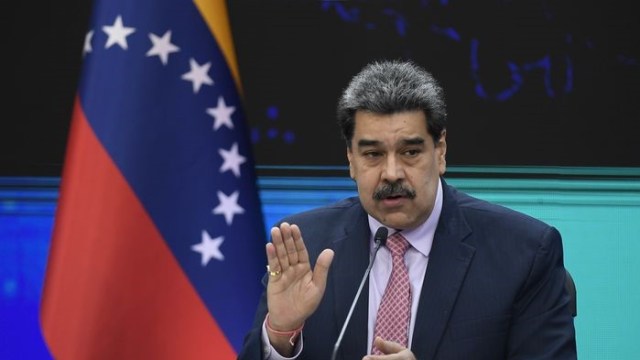
Just seven years ago, Venezuela was pumping some 2.5 million barrels of oil a day, much of it zipping across the Caribbean to U.S. refineries. Current output is less than 700,000, nearly all of it passing through murky sanctions-busting channels to China.
By Barron’s – Craig Mellow
Dec 02, 2022
Restoring those missing 1.8 million barrels sounds alluring in today’s climate. The Biden administration has inched in that direction lately, clearing Chevron for some exports that were blocked by Donald Trump’s maximum pressure policy.
Unfortunately, restoring Venezuela’s petro might quickly is also a fantasy. Chevron (ticker: CVX) may eke an extra 150,000 barrels a day over the next two years out of joint ventures with state oil company Petróleos de Venezuela, says Francisco Monaldi, director of Latin American energy at the Baker Institute for Public Policy. “After that, you need investment.”
Lots of investment. A Venezuelan opposition study reckoned it would take at least $70 billion and six years to return output to two million barrels daily.
Trump’s 2019 sanctions were just the final act of a tragedy that Nicolás Maduro’s regime inflicted on itself through massive looting and neglect of its oil cash cow. “Hundreds of billions were stolen over the years from PDVSA,” says Ryan Berg, director of the Americas program at the Center for Strategic and International Studies. Venezuela’s $60 billion debt default in 2017 choked off fresh financial oxygen.
Unlike the Middle East’s desert gushers, Venezuelan crude is dispersed among small wells that run dry at a rate of 15% to 20% a year, Monaldi explains. At this point, there is little oil readily left to pump. PDVSA’s once-crack engineering cadre dispersed globally after salaries fell to nearly nothing.
Then there is the political side of things. Biden’s Chevron carrot was implicitly linked to revived talks between Maduro and his mostly-exiled opposition. The ultimate goal is a legitimate presidential election in 2024; Venezuela watchers will believe that when they see it. “I’ve seen almost a dozen of these negotiations,” Berg says. “Maduro has pulled the same crap every time.”
It isn’t clear either who the regime should parley with. Juan Guaidó, whom Washington recognizes as Venezuela’s legitimate president, has lost his comrades’ confidence. A former Caracas-area mayor named Gerardo Blyde is instead leading a fractured opposition delegation.
That might counterintuitively ease the internal peace process, as Maduro could gamble on a competitive, if not entirely free, election. Relaxation of mad currency restrictions has also boosted Venezuela’s economy, and the autocrat’s popularity, a bit over the past few years.
There is a lot of middle ground that could be reached on the way to 2024. The U.S. is dangling $2.7 billion in frozen Venezuelan cash for an as-yet amorphous humanitarian fund, administered by Washington or maybe the United Nations. Returning existing Venezuelan output to the U.S., instead of its shadowy, expensive passage to China via Cuba or Malaysia, could benefit both sides. “Southern U.S. refineries were basically built for Venezuelan crude,” CSIS’ Berg says.
Maduro has been waiting in vain for a decade for Chinese and Russian oil investment to replace expropriated multinationals, and may want to switch tack. “He can see by now that his China-Russia Plan A is not working,” says David Voght, managing director of energy consultant IPD Latin América.
Washington’s blackout sanctions on Venezuela, intended to lever Maduro out of power, haven’t worked either. That may be the best reason to ease them. Just don’t expect Venezuelan oil to crash prices at the pump.
…
Read More: Barron’s – Don’t Expect a Gusher From Venezuela Oil Deal With U.S.
…

